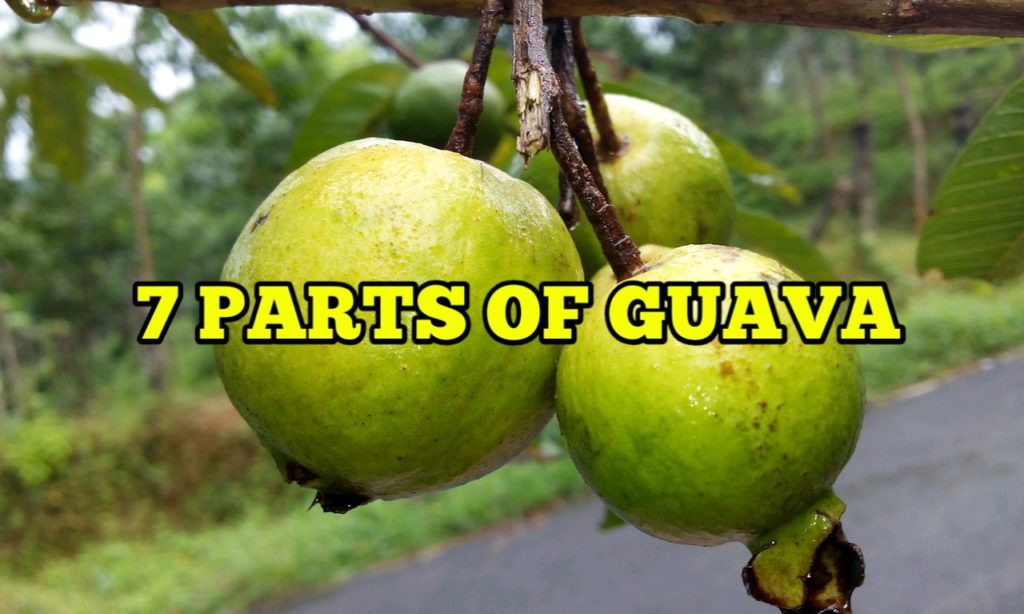
Today, you will learn the parts of guava. Guava is a fruit that is rich in vitamin C. People love it because it helps our immune system stronger. But our topic today is about parts of guava.
So, what are the parts of Guava? The parts of guava are Guava Seeds, Guava Roots, Guava Leaves, Guava Bark, Guava Branches, Guava Flowers, and Guava Fruit.
1. Guava Seeds
The guava seeds are a part of guava where the plants grow. The seeds are hard, round in shape, pinkish to orange in color, and have a smooth texture.
The seeds are where the plants start to germinate. It takes a few weeks to grow the guava seeds.
2. Guava Roots
The guava roots are a part of the guava tree that sends vitamins and minerals to the tree.
It means that when there are nutrients found on the soil, the roots have the role of sending them throughout the tree.
The roots of the guava had a rough texture. It grows longer, about two to four few meters long. The thickness of the roots varies about how old the tree is. It has a fair smell.
The roots’ color is color brown to dark brown, while the inside of the roots is color white.
When the guava tree grows, the roots will show off on the soil, so you need to add soil above the roots to make them stronger. You need to apply fertilizer to the tree to grow better.
3. Guava Leaves
The guava leaves are a part of guava fruit that makes food for the tree. When the sunlight hits the leaves, the leaves have work, and it is to convert the sunlight into food. The leaves have many parts that work together to process them.
When you see the guava leaves, it is green when too young and turns yellow to brown when it grows older and dry.
The leaves tip is pointed and has a smaller stem-like on the leaves. It is small in size.
The leaves of the guava need more sunlight. It will produce healthier leaves when it gets more by having green leafy leaves. It will produce more flowers and more fruits.
4. Guava Bark
The guava bark is a part of the guava tree, which is the tree’s main body.
It means that this is the essential part of guava. You will see the growing branches that continue to grow and hang and sway in this part.
The flowers also grow this part. And the leaves.
The guava bark has a rough texture. It is hardwood. It has a small bark when young and becomes bigger as time passes.
There is a bulk of small skin on the bark. The color also of the bark is green when too young and continues to become brown when to grow older.
The bark is the pathway of vitamins and minerals. When the nutrients enter the roots, the bark can send it to other parts like leaves, branches, flowers, and fruits.
5. Guava Branches
The guava branches are part of guava, which is the tree’s secondary part. The central part is the bark/trunk, and the secondary is the branches.
You will see the growing leaves, flowers, and fruits on the branches. It is where they grow.
The guava branches also have a role in the fruits, flowers, and leaves. It is to transport nutrients on them.
Minerals from the soil are transported to those parts to roots, bark, and branches.
The branches grow more extensive but not as big as the bark. It has a green to brown as it continues to grow.
The branches are rough in texture. It has a wood smell and grows longer, about a few meters long.
6. Guava Flowers
The guava flowers are a part of the guava, making the fruit beautiful. When there are more flowers on the tree, it is lovely to our eyes.
When we see a flower, it tells us that soon it will turn into a young fruit. The flowers of the guava are hard to produce.
Weather can affect them. When there are many flowers, and the rain comes, most of the flowers will fall. That is an unfortunate event.
The flower of guava is color white when young. It is small in size and smoothes in texture.
You need to care for and apply more fertilizer to ensure that it will produce more flowers. And then more fruits to harvest.
7. Guava Fruit
The guava fruit is a part of guava in which it helps to produce seeds. The guava looks round in shape with a crown on its head.
It is color green when not ripe and color yellow when ripe. The meat is white or, in some varieties, pinkish or reddish and has many seeds inside.
From the flowers, it will turn to guava fruit. You need to apply more fertilizer so that it will produce more fruits. It would help if you also watered it regularly to produce bigger fruits.
There’s no guarantee that all flowers will turn to fruits. Some factors may affect, but the main thing is you need to do your job to make the fruits bear the best fruits in your grown guava tree.
Thank you for reading this article about parts of guava. Thank you for your time and effort in reading this whole stuff. I hope you learn something coming from us even as little as possible. More articles to publish, and I hope you come back soon. Good day.
